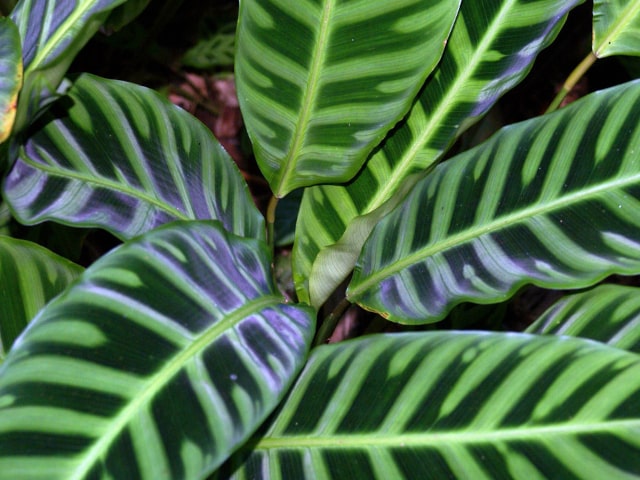
Calathea plants are among those houseplants that are mainly grown for their foliage. Other than the foliage, these plants look very humble. However, the leaves of Calathea plants are so rich and gorgeous that they are among the most beautiful house plants you can grow.
Calathea is a moderately-fast growing plant that will look gorgeous in your home if you give it proper care. Indoors, a Calathea plant can reach about 2 feet (60 cm) in height. However, small varieties, such as Flowering Calathea, can only reach about 12 inches (30 cm) in height. Keep this in mind when deciding on the Calathea variety you wish to grow in your home.
Calathea Care Requirements
Calathea plants are gorgeous and can look amazing in your home. However, the only way to make it thrive is to give it all the care requirements in requires. Keep in mind that this is not an easy houseplant that you can make grow without putting in any effort. Those who prefer low-maintenance plants might not like Calathea plants. Also, these plants might be too overwhelming for beginner gardeners.
However, if you have patience, experience and willingness to make an effort, Calathea plants can be the most beautiful plants you'll grow in your home. Just make sure to truly take time to provide it with everything it needs. This plant can suffer a lot if you mistreat it or if you don't provide proper care to it.
Here are the basic Calathea care requirements:
- Light. Calathea plants need light, but you should never subject them to direct sunlight. Direct sun will make the leaves lose their markings. However, you should not put your Calathea on a dark spot, either. Good places for your Calathea may include a north-facing window or another place with enough light but without much direct sunlight. It is important to provide your Calathea with some shielding from the sunlight.
- Water. Another important thing to note is watering. Watering is crucial for a success with Calathea plants. These plants require moist soil at all times. However, the plant should never be wet and it should never sit in water. It means that you have to be very careful with the watering regime and the amount of water you provide. It is best to give your Calathea small but regular amount of water during the growing season. Water as soon as you notice the surface starting to dry up. During the cooler and darker winter months you may water a little less.
- Temperature. Calathea plants require warm temperatures to thrive. Minimal temperatures required by Calathea plants are 60 to 70 degrees F (15 to 21 degrees Celsius). Never keep your Calathea in a room that has a temperature lower than 50 degrees F (10 degrees Celsius). Also, it is important to provide reasonable ventilation to your plant but without any strong draughts and temperature changes.
- Humidity. Humidity is another crucially important factor for growing Calathea plants. You need to provide your Calathea with enough humidity to make it thrive. This plan requires high humidity levels and if you don't provide this to your plant it will get sick. In fact, inadequate humidity is the number one reason for failure with this plant. If you have a bottle garden, Calathea is an excellent candidate to be grown there. This particularly go for the small varieties of Calathea. If a bottle garden is not an option you need to find another way to increase humidity around your plant. Some methods include regular misting of the leaves but it rarely produces long-term results. A device made for increasing humidity around the plant might be the best way to go if you live in a very arid area.
- Fertilizer. Your Calathea plant needs regular feeding. It is best to fertilize it every two weeks using a half-strength proprietary houseplant fertilizer. However, make sure to feed your plant only during the growing season. Cut the fertilizer in winter completely. Also, it is best to avoid any shine products, particularly those that have a fertilizer included.
Calathea Repotting and Propagation
Repotting and propagation are some additional things you need to think about. These are needed to make your Calathea thrive.
If you take a good care of your Calathea, it will grow strong and healthy. Such a plant will need to be repotted every year or every other year. The best time for repotting is spring or summer. When repotting, make sure to use fresh potting soil.
If you want to propagate your Calathea plant, you need to do it at the same time as repotting. However, remember that propagation will change the look of your plant - it will not look as bushy as before.
The easiest way to propagate Calathea plants is by division. Simply divide the plant by half or into smaller pieces. Choose smaller pieces only if your Calathea plant is very large. Otherwise, simply divide it by half. This needs to be done at repotting. Divide the plant and pot each section in its own pot. In the beginning, keep the new divisions in a shady, moist and warm area. It is also a good idea to cover the pots with plastic. Once the divisions start developing a new growth you can remove the plastic and care for your new Calathea plants in the usual manner.
Additional Calathea Care Tips
Here are some additional tips for Calathea plants care:
- Leaves on your Calathea will get dusty from time to time. To clean them, use a damp cloth to remove the dust. Alternatively, you may use a tepid shower. However, make sure to remove all leftover water from the leaves.
- Never use any leaf shine products (or leaf polish products) on Calathea plants.
- The majority of Calathea plants do not flower indoor. They are grown for their gorgeous foliage. However, if you really want to have a flowering Calathea, opt for Calathea crocata. Known as the "Flowering Calathea", this plant gives gorgeous orange flowers indoors. The flowers grow above the foliage so they are very effective. However, remember that this variety has a very plain foliage so it is grown just because of the flowers.
Photo credit: Makuahine Pa'i Ki'i
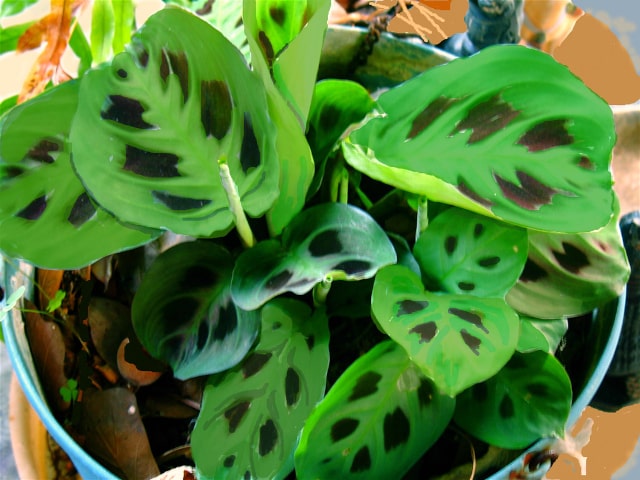
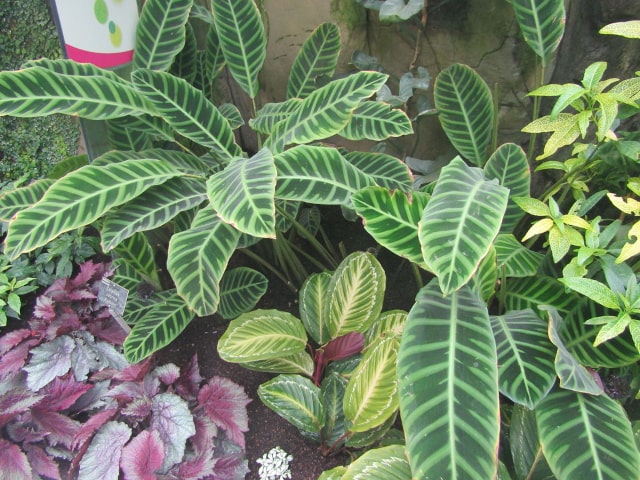
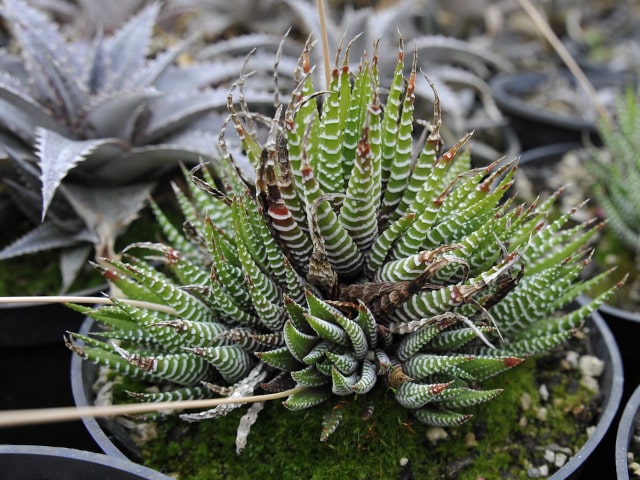
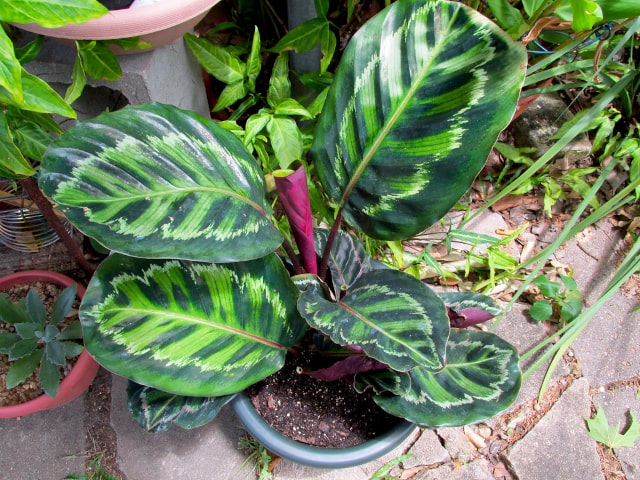
12 Comments
It is true that you should never polish your Calathea leaves? I got a marion and illustris and was overly excited. So I sprayed "leafyglow" on the leaves and after 5 mins, they curled up and never recovered. Saddest day of may Calathean life.
We've had a Calathea (Wavestar) in our shady bathroom for about 10 years. It hasn't really got any bigger (about 75cm tall x 75cm spread) Every now & then some stems/leaves fall over if I forget to water it. I always use rainwater. Never tap water as it has chlorine in it & many plants cannot tolerate it. The same when misting leaves; only rainwater. The leaves definitely need de-dusting with spray & sponge at least twice a year. I did this in the shower last year but it's a bit awkward! Mist off afterwards with rainwater. I'm about to repot it as I think it's a bit rootbound & will definitely benefit from a feed as I often forget to do it. I may also divide it & see if it will survive!
My Calathea plant are curling inside so I move them to indirect sunlight but still they remain the same. Please help.
I keep a spray bottle of water next to mine and spritz it every evening or so (I try my best to remember). It's doing very well!
Mine has some yellow leaves, soil is dryish - not sure if it's from overwatering or underwatering? Help?
very informative, precise information - just what I required. Luckily my Calathea family enjoy their home under the palms & are thriving - all require division & a repot.
I have a Calathea Croc. The flowers on my plant are beginning to die off - do I cut them right down to the base of the stem? Can I expect more flowers to form?
If you take the advise from all the information above you won't go far wrong.
After reading about this plants need for high humidity, I am moving mine into the bathroom. It sits next to our fireplace right now and isn't doing well, DUH :)
My plant leaves are dry, please can u help?
Hi, I have a Calathea and am having a lot of problems with it. At first it was just the leaves sort of drooping and I gave it more water and the plant improved. Then the leaves started curling inwards. I sprayed some soapy water on it just in case of pests but now it became a dark green, completely curled and it looks like it is dying :( Can you help please?